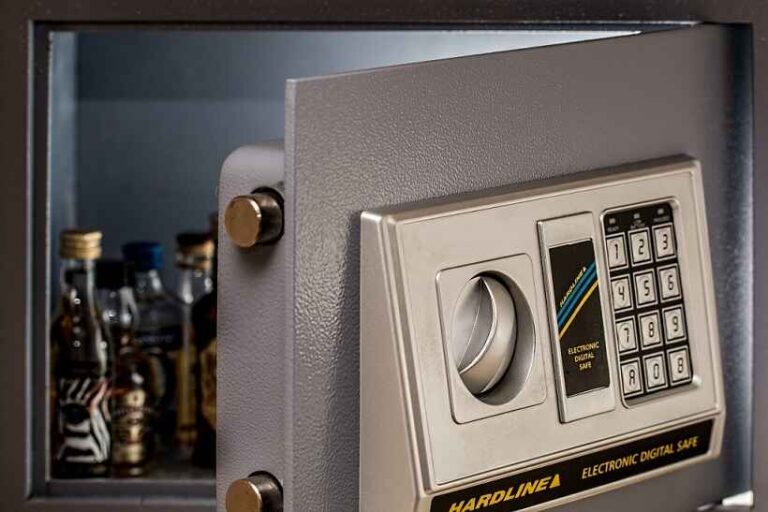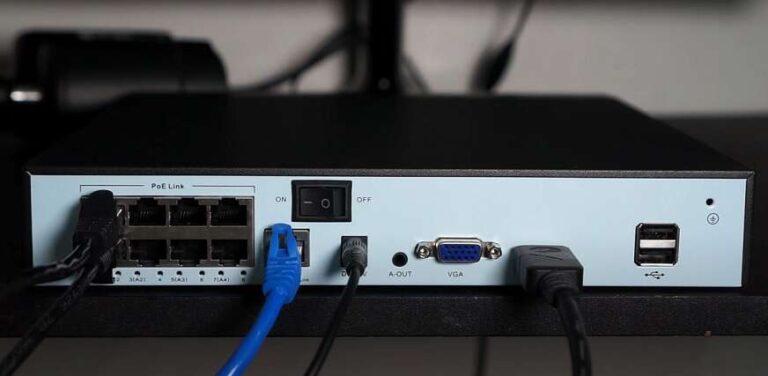Understanding RTSP on Security Cameras: Benefits and Limitations
As security cameras become more popular in homes and businesses, there is a growing need for technology that can help manage and stream video feeds from these cameras. One such technology is Real-Time Streaming Protocol (RTSP). In this article, we will explore what RTSP is, how it works, its benefits, and limitations.

Introduction to RTSP and its Importance
RTSP is a network control protocol designed for use in streaming media systems. It was first introduced in 1998 by RealNetworks and has since become an industry standard for streaming video and audio. RTSP is designed to work with a variety of different types of streaming media, including live and recorded video, as well as audio-only feeds.
In the context of security cameras, RTSP is used to manage and stream video feeds from the cameras to various devices, such as computers, mobile phones, and other networked devices. RTSP provides a standardized way for different devices to communicate with the camera and access its video stream.
What is RTSP on a Security Camera?
RTSP on a security camera is a protocol used to manage and stream video feeds from the camera to other devices on the network. The protocol is typically used in conjunction with a media player or other software that can decode the video stream and display it on a screen.
How Does RTSP Work?
RTSP works by establishing a connection between a client device and an RTSP server on the camera. The client sends requests to the server to start and stop the video stream, as well as to seek to different points in the video stream.
When a client requests to start the video stream, the server responds with a series of messages that include information about the video feed, such as the codec used, the resolution, and the frame rate. The client can then use this information to decode the video stream and display it on a screen.
RTSP Server and Client
An RTSP server is a software program that runs on the camera and handles incoming RTSP requests from client devices. The server is responsible for managing the video stream and ensuring that the client receives the video data in the correct format.
A client device is any device that can communicate with the RTSP server and decode the video stream. This can include a media player, a web browser, or any other software that can handle RTSP streams.
RTSP URLs
RTSP URLs are used to identify the location of a video stream on the network. The URL includes information about the server, the port number, and the video stream itself. An example of an RTSP URL for a security camera might look like this: rtsp://192.168.1.100:554/live/ch0.
RTSP vs. HTTP
RTSP and HTTP are both protocols used for streaming media, but they have some important differences. HTTP is a stateless protocol, which means that each request is treated independently and the server does not retain any information about previous requests.
RTSP, on the other hand, is a stateful protocol that maintains a connection between the client and server for the duration of the streaming session. This allows for greater control over the video stream and provides more flexibility in managing the stream. Additionally, RTSP is designed specifically for streaming media, while HTTP was not originally designed for this purpose.
Benefits of Using RTSP on Security Cameras
There are several benefits to using RTSP on security cameras, including:
- Real-time video streaming: RTSP provides low latency video streaming, which means that the video feed is delivered in real-time, with minimal delay.
- High-quality video: RTSP supports high-resolution video streams and can handle high bitrates, which means that the video quality can be very good.
- Standardized protocol: RTSP is an industry-standard protocol that is widely used, which means that it is compatible with a wide range of devices and software.
- Flexible configuration: RTSP provides a lot of flexibility in how the video stream is managed and delivered, which means that it can be customized to meet specific needs.
RTSP Streaming Protocols
There are several different RTSP streaming protocols that can be used, including RTP (Real-Time Transport Protocol), RTCP (Real-Time Control Protocol), and SDP (Session Description Protocol). These protocols work together to manage the video stream and ensure that it is delivered in the correct format.
RTSP and ONVIF
ONVIF (Open Network Video Interface Forum) is a standard for IP-based video surveillance that includes specifications for how video streams are managed and controlled. RTSP is one of the protocols that is supported by ONVIF, which means that cameras that support ONVIF can be managed using RTSP.
Limitations of RTSP
While RTSP has many benefits, there are also some limitations to consider. These include:
- Security concerns: RTSP is not a secure protocol and can be vulnerable to attacks, such as eavesdropping and data interception.
- Bandwidth requirements: RTSP can require a significant amount of bandwidth to stream high-quality video, which can be a concern for networks with limited bandwidth.
- Compatibility issues: While RTSP is an industry-standard protocol, there can be compatibility issues between different devices and software.
Security Concerns with RTSP
As mentioned earlier, RTSP is not a secure protocol and can be vulnerable to attacks. To mitigate these risks, it is important to use encryption and authentication to secure the video stream. Additionally, it is important to keep software and firmware up to date to ensure that any security vulnerabilities are addressed.
How to Enable RTSP on a Security Camera
Enabling RTSP on a security camera will depend on the make and model of the camera. In general, it will involve accessing the camera’s settings and enabling the RTSP server. Once this is done, the camera can be accessed using an RTSP client, such as a media player or other software.
Troubleshooting RTSP Issues
If you are experiencing issues with RTSP on your security camera, there are several things you can try to troubleshoot the issue. These include:
- Checking network connectivity: Make sure that the camera and client device are connected to the same network and that there are no connectivity issues.
- Checking settings: Make sure that the camera’s RTSP server is enabled and that the client device is configured to use the correct RTSP URL.
- Checking compatibility: Make sure that the camera and client device are compatible with each other and that they are both using the same RTSP streaming protocol.
Best Practices for Using RTSP on Security Cameras
To get the most out of RTSP on security cameras, it is important to follow some best practices, including:
- Use encryption and authentication: Secure the video stream by using encryption and authentication to prevent unauthorized access.
- Use a secure network: Ensure that the camera and client device are connected to a secure network to minimize the risk of security breaches.
- Optimize network bandwidth: Minimize network bandwidth usage by configuring the video stream to use the appropriate bitrate and resolution.
- Keep software and firmware up to date: Stay up to date with the latest software and firmware updates to ensure that any security vulnerabilities are addressed.
Conclusion
RTSP is a protocol that allows for real-time video streaming over the internet. It is widely used in security cameras and other IP-based video surveillance systems. While RTSP has many benefits, it is important to consider its limitations and to take steps to secure the video stream. By following best practices and troubleshooting issues as they arise, it is possible to use RTSP to deliver high-quality video feeds that can be accessed and managed from a wide range of devices and software.
FAQs
What is RTSP used for in security cameras?
RTSP is used to stream real-time video from security cameras over the internet.
How does RTSP work with security cameras?
RTSP works by establishing a connection between the camera and client device, allowing for real-time video streaming.
Is RTSP a secure protocol?
No, RTSP is not a secure protocol and can be vulnerable to attacks. It is important to use encryption and authentication to secure the video stream.
Can all security cameras use RTSP?
No, not all security cameras support RTSP. However, many modern IP-based cameras do support RTSP.
What are the benefits of using RTSP on security cameras?
The benefits of using RTSP on security cameras include real-time video streaming, high-quality video, a standardized protocol, and flexible configuration options.
More resources you might be interested in:
https://securitybros.com/best-budget-outdoor-ptz-ip-cameras/
https://securitybros.com/best-reolink-ip-security-camera/
https://securitybros.com/thermal-security-cameras/






